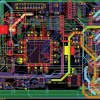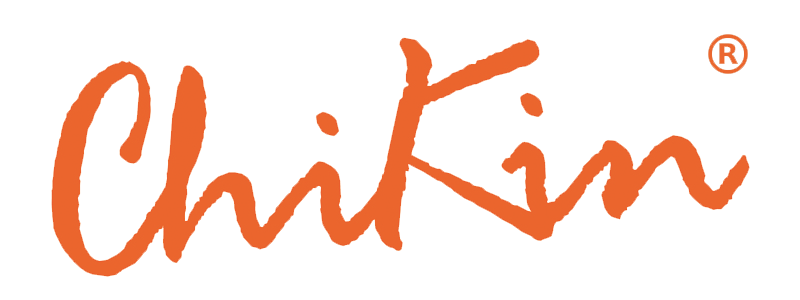PCB Market Structure
Dec 19, 2022
PCB Market Structure
Rigid board dominates the global PCB market, and it will develop to the direction of high precision, high integration, thin and light in the future
Rigid board is still dominant in the global PCB market. In 2021, single/double-side board and multilayer board account for about 11.4% and 39.1%, respectively, accounting for about 51% in total. Flexible board account for about 20%, HDI board application account for about 15%, packaging substrate about 14%. In the future, with the development of wearable devices and other intelligent electronic terminal products in the direction of lighter, thinner, smaller and more convenient, PCB will continue to develop in the direction of high precision, high integration and thin and light, and products such as flexible board, HDI board and packaging substrate are expected to be promoted.

Single/double-side board and multilayer board
PCB board will gradually develop to the high-level, automobile electric, intelligent, industrial control and 5G communication are the growth drivers
The electrification and intelligence of automobile and industrial control are the main growth fields of ordinary multilayer board in the future, while 5G is the core of the current growth of high multilayer board.
- Single-side board is the most basic PCB, mainly used in common household appliances, electronic remote control and simple electronic products. The double-side board is wired on both sides of the substrate, and there is an appropriate circuit connection between the two sides. It can be used for more complex circuits, mainly used in consumer electronics, computers, automotive electronics, communication equipment, industrial control and so on.
- According to the number of layers, the multilayer board can be divided into low/medium-layer board and high-layer board. Low/medium-layer board generally refers to 4-6 layers of conductive graphics printed circuit boards, mainly used in consumer electronics, personal computers, notebooks, automotive electronics and other fields. High layer board is a printed circuit board with 8 or more layers of conductive graphics, which can be used in communication equipment, high-end servers, industrial control medical treatment, military and other fields. With the development of light, thin, short and small electronic products, the demand for PCB board has gradually developed to the high layer, the number of the top layer of multilayer board has reached more than 60 layers.
- Common multilayer board is mainly used in communication, automobile, industrial control, security and military industries. The electrification and intelligence of automobile and industrial control are the main growth fields of common multilayer board in the future. High-multilayer boards are mainly used in high-capacity data exchange scenarios such as core networks and wireless communications, and 5G is the core of their current growth. The output value of multilayer PCB is expected to reach $34.138 billion in 2026, with a CAGR of 4.37% from 2021 to 2026.

Flexible board
Flexible board has a wide scope of growth driven by the innovation of consumer electronics
Flexible boards are mainly used in high-end consumer electronics. Consumer electronics innovation continues to drive the demand for flexible boards. The global output value of flexible boards is expected to reach $19.533 billion in 2026.
- Due to the need of internal space in smart phones, the use of flexible board has been gradually increased. Flexible board (FPC) characteristics are: light, thin, flexible, and to a certain extent can replace rigid PCB. Flexible panels can replace PCBS in the interior of smartphones to some extent, thus saving enough space for other electronic devices. With the increase of cell phone internal battery volume, as well as the increase of the volume of each module, the already compact internal space is further compressed, rigid PCB is no longer used, the link of different modules and devices using flexible board products, driving the consumption of flexible board gradually increased.
- The total flexible board usage of Huawei Mate30 has exceeded 20 pieces, which has doubled compared with the previous Huawei P20 Pro. Apple mainly adopts the modular processing scheme of components, and connects various functional modules through flexible boards. The newly added functional modules continuously increase the consumption of flexible board, driving the continuous expansion of flexible board market. The new iPhone has 25 to 26 flexible boards, up from 10 on the iPhone4. With the continuous upgrade of the interior space of smart phones, it is expected that the average usage of flexible boards in the whole smart phone will gradually increase. In 2021, the global output value of flexible boards was about $14.173 billion, and it is expected that the global output value of flexible boards will reach $19.533 billion in 2026.

HDI board
HDI board is thin and short, can achieve high-density interconnection, the market size will achieve rapid growth
The HDI board is thin and short, which can realize high-density interconnection and adapt to the innovation trend of electronic products. The output value of the global HDI board is expected to reach $15.061 billion in 2026, and the CAGR is expected to reach about 7.18% in 2021-2026.
- HDI (High Density Interconnect) board has the advantages of light, thin, short, small, these characteristics can increase the line density, is conducive to the use of advanced packaging technology, can greatly improve the signal output quality, the function and performance of electronic and electrical products have been greatly improved. It can also make electronic products more compact and convenient in appearance. For higher-order communication products, HDI technology can help products improve signal integrity, facilitate strict impedance control, and improve product performance.
- Global HDI board output was $8.178 billion in 2017 and approximately $10.647 billion in 2021, with a CAGR of 6.82% in 2017-2021 and projected to reach $15.061 billion in 2026, with a CAGR of around 7.18% in 2021-2026.

Package substrate
Packaging substrate technology threshold is high, driven by the downstream terminal, will show explosive growth
The packaging substrate market has witnessed explosive growth. It is estimated that the output value of the global packaging substrate market will reach $15.517 billion in 2026, with a CAGR of 9% from 2021 to 2026
- The technical threshold of packaging substrate is higher than that of ordinary PCB products. The packaging substrate is developed on the basis of HDI board and has a certain correlation with HDI board, but from the perspective of technical threshold, the packaging substrate's technical threshold is much higher than that of HDI and ordinary PCB. Compared with ordinary PCB, the packaging substrate has the characteristics of high density, high precision, high number of feet, high performance, miniaturization and thinness, etc., and has higher requirements on various technical parameters, especially in the most core line width/line distance parameters, which are far less than other kinds of PCB products.
- Benefiting from the increase in sales of high-end mobile phones, the significant growth of the memory chip market and the gradual increase in the volume of automotive chips, the output value of the global packaging substrate has bottomed out since 2017. In 2021, the output value of the global packaging substrate is about 10.083 billion US dollars, with a CAGR of 10.88% from 2017 to 2021. It is expected to reach $15.517 billion in 2026, with a CAGR of 9% from 2021 to 2026.
- At present, the global capacity of package substrate is mainly distributed in East Asia, among which Japan, South Korea and Taiwan of China are the most concentrated countries or regions with the most advanced technology.

Recent Posts

October 26, 2016
The Most Successful Engineering Contractor
May 12, 2025
China PCB Drilling Routing machine Development
May 06, 2025
PCB Design Process and Key Points




